Home | Tours | Trip Reports | News | Team | Calendar | Links | Contact | Store | Mailing List

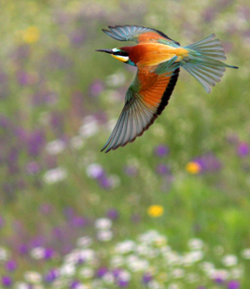 GRAND
SPAIN
GRAND
SPAIN Andalusia, the Ebro Valley
& the Pyrenees!
August 31 - September 14, 2024
Contact
[email protected]
to
reserve your space!
Trip
Cost & Travel
Planning> Registration
Form>
Tour Registration, Terms, Cancellation Policies>
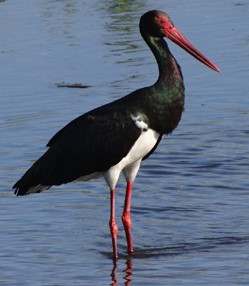 Spain
is the most visited European
country by birders because
of its position along
a main migration route
between Europe and Africa.
Also, it contains almost
all of the habitats of
the Western Palearctic,
many of which are relatively
well conserved. Spain's
mosaic of habitats provides
shelter to a great number
and variety of species.
During our two-week tour,
we’ll
visit many of Spain’s
most beautiful and important
areas, which
Spain
is the most visited European
country by birders because
of its position along
a main migration route
between Europe and Africa.
Also, it contains almost
all of the habitats of
the Western Palearctic,
many of which are relatively
well conserved. Spain's
mosaic of habitats provides
shelter to a great number
and variety of species.
During our two-week tour,
we’ll
visit many of Spain’s
most beautiful and important
areas, which 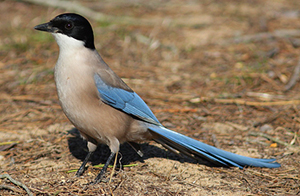 will provide
us access to an unsurpassed
representation of Mediterranean
species including many
migrants to the region.
It is possible to observe
more than 200 bird species
during our stay, with
special attention given
to finding the Spanish
specialties such as Spanish
Imperial Eagle, Lammergeier,
Black
Stork, DuPont’s
Lark, Iberian
Magpie,
and Wallcreeper, and such
beauties as European Roller,
Golden Oriole, and European
Bee-eater.
will provide
us access to an unsurpassed
representation of Mediterranean
species including many
migrants to the region.
It is possible to observe
more than 200 bird species
during our stay, with
special attention given
to finding the Spanish
specialties such as Spanish
Imperial Eagle, Lammergeier,
Black
Stork, DuPont’s
Lark, Iberian
Magpie,
and Wallcreeper, and such
beauties as European Roller,
Golden Oriole, and European
Bee-eater.
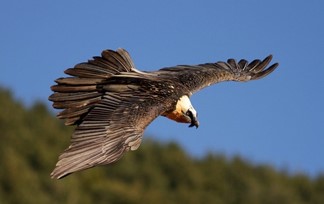
Located on the main migration route between Europe and Africa, Spain hosts 25 species of raptors including the massive Lammergeier, and numerous alpine, steppe, aquatic, and Mediterranean birds. There are many unique mammals, butterflies, and wildflowers to enjoy, and we’ll visit significant historic sites, as well. Spain’s remarkable bird life, rich culture and history, scenic beauty, and incredible food and wines make it the perfect birding destination.
As
a complement to our
birding activities,
we’ll
visit historic monuments
and cultural sites
including The House
of Goya, El 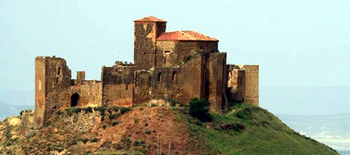 Castillo
de Loarre (XI C.),
El Monasterio de San
Juan de la Pena (XI/XIII
C.) and Trujillo Castle
built in the 13th century
on the site of an old
Arab fortress from
the 9th/10th century.
This tour is specially
designed for those
who wish to see a maximum
number of European
bird species combined
with Spain’s
enchantingly rich culture
and while in the most
spectacular landscapes
of this part of the world.
Castillo
de Loarre (XI C.),
El Monasterio de San
Juan de la Pena (XI/XIII
C.) and Trujillo Castle
built in the 13th century
on the site of an old
Arab fortress from
the 9th/10th century.
This tour is specially
designed for those
who wish to see a maximum
number of European
bird species combined
with Spain’s
enchantingly rich culture
and while in the most
spectacular landscapes
of this part of the world.
Areas
we will visit:
In
Andalucía,
we will visit the Straits
of Gibraltar, the closest
gap between Europe and
Africa, where birds gather
before attempting to cross
between the two continents.
Thousands of Raptors congregate
at this time, especially
Black Kites, Short-toed
Snake Eagle, Booted Eagles,
Honey, and Common Buzzards;
also Eurasian, Rüppell’s
(rare), and Egyptian Vultures,
Sparrowhawks, Marsh and
Montagu’s
Harriers. In the surrounding
area are wetlands, perfect
stop-overs for aquatic
species to recover before
the big jump into Africa.
On the right day, White
Storks pass through in
impressive numbers, usually
joined by smaller groups
of Black Storks. Bee-eaters
and other diurnal migrants
also move-through the
area. The Straits are
also the connection point
between the Atlantic
Ocean and the Mediterranean
Sea, and the corridor
for many seabirds and
cetaceans to pass between
the two. The Straits
have also been strategic
militarily since Muslim
times, especially during
the Second World War,
with a British enclave
on The European side,
and the two Spanish cities
along the North African
coast.
In
Extremadura, we will
visit one of the last
true wild steppes in
Western Europe, La Serena,
and the craggy mountains,
rivers, and Dehesa forest
of the Monfragüe
National Park. This will
give us an outstanding
chance to see large numbers
of birds amidst ruggedly
beautiful terrain, and
to experience memorable
views of extraordinary
birds such as Little and
Great Bustards, Bonelli’s
Eagle, Spanish Imperial
Eagle, Black Vulture,
Egyptian Vulture, Griffon
Vulture, Black-shouldered
Kite, White Storks, Black
Storks, Eagle Owl, and
Iberian (Azure-winged)
Magpie.
Other specialties such as Sylvia warblers, and both Pin-tailed and Black-bellied Sandgrouse, are also found in the area. Extremadura is wonderful in its landscapes with abundant rural areas preserving an ancient and respectful way of living with Nature. The Belchite Steppes and adjacent semi-desert areas are Spain’s best area to see the secretive DuPont’s Larks, as well as Lesser Short-toed Larks, Black Wheatear, and Spectacled Warblers, among many other species. Belchite is also the site of historic ruins, retained as a standing testimony of the Spanish civil war.
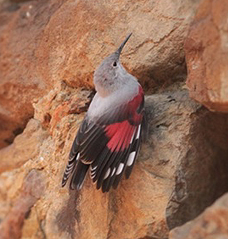
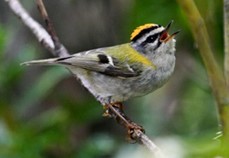 The
Pyrenees is a range of
mountains with peaks
well over 3,000 meters.
Alpine stage and Arctic
forest habitats are where
we will look for birds
like Lammergeyer, Goldcrest, Wallcreeper,
Black Woodpecker, Citril
Finch, Water Pipit,
and
Alpine Accentor, among
others. With road access
to these habitats, you
won’t
need to become an alpinist,
so you can leave the
crampons and ropes
behind!
The
Pyrenees is a range of
mountains with peaks
well over 3,000 meters.
Alpine stage and Arctic
forest habitats are where
we will look for birds
like Lammergeyer, Goldcrest, Wallcreeper,
Black Woodpecker, Citril
Finch, Water Pipit,
and
Alpine Accentor, among
others. With road access
to these habitats, you
won’t
need to become an alpinist,
so you can leave the
crampons and ropes
behind!
The famous Ebro Delta is the biggest wetland area of the Spanish Mediterranean coast. The 32,000 hectares attract great numbers of gulls, terns, wildfowl, shorebirds, herons, and egrets. At the time we are there, the rice harvest will be at its best, leaving fields available for the migrant birds. The combination of different wetland areas and the rice and salt activities makes this Delta one of the most attractive for watching birds in all of Europe. Resident birds gather in groups during the autumn moult. Most of the summering species will still be there getting ready for their migration to Africa. Long-distance migrants coming from the Arctic will be busy feeding up for the next stage and the numbers could be at their peak. If we’re lucky, some of the earliest winter arrivals will show up. By the end, we will have amassed a mouth-watering list of birds from our journey. We hope you can join us.
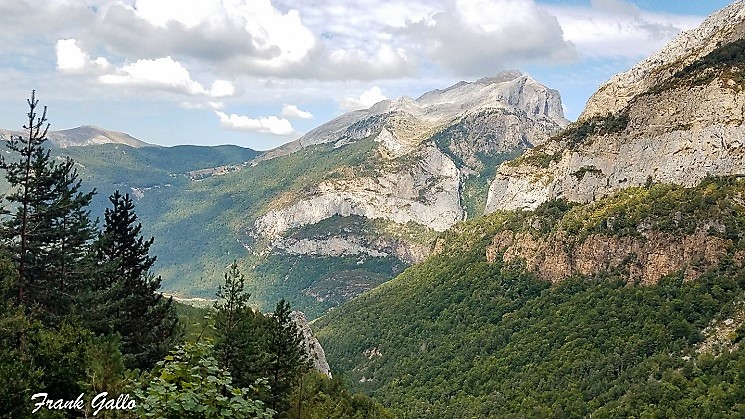
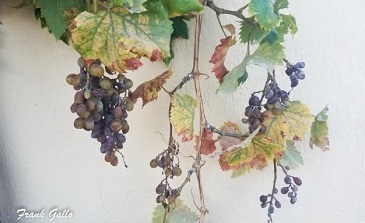
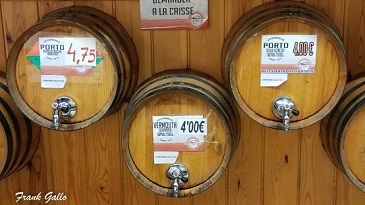
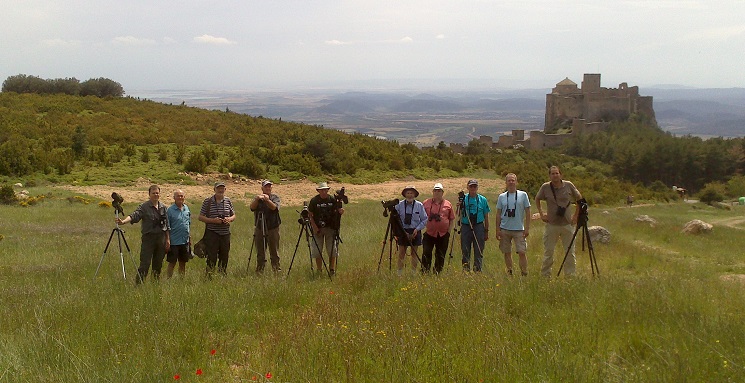
TOUR MAP

Join
us to discover the
birds, wildlife and
culture of Grand Spain!
Contact
[email protected]
to reserve your
space!
Trip Cost & Travel Planning> Registration Form> 2021 Tour Report>
Itinerary
Day
0 – Travel
to Seville, Spain
Plan
on flying to Seville, Spain
(Airport
code: SVQ) on
or
before August 31 (Seville
is lovely) to arrive for
the beginning of the tour
on the afternoon of August 31. Flights
are not included, however
we have a flight agent
who can help. Note
that departures at the
end of the tour are from
Barcelona, Spain (Airport
code: BCN).

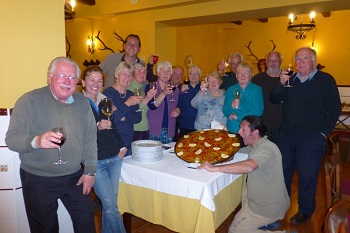 DAY
1 - Start of Tour, Seville,
Spain
DAY
1 - Start of Tour, Seville,
Spain
The
tour begins at 2PM
at Ayre
Hotel in
Seville where we
will meet and begin
our journey.
On our drive
south,
we
will visit the wonderful
nature reserve, Laguna
de
Medina, where we’ll
have our best chance
of finding specialties
such
as White-headed
Duck,
Marbled Teal, Crested
Coot
and Olivaceous
Warbler.
Migrant passerines,
raptors,
and storks may
also be
seen while transferring
to the Strait
of
Gibraltar.
Gibraltar
is the
closest
gap
between Africa
and
Europe and migrant
birds
gather here in
large
numbers
awaiting fair
winds
which allow
them
to cross on their
journey
to
their wintering
quarters.
Overnight in Zahara
de los Atunes.
Meals included in
the tour
begin with dinner
tonight.
DAY
2 – Birding
in the Straits of Gibraltar
Depending
on the winds, we will
go in one of two directions
in search of migrant
raptors and storks waiting
to cross. Honey
Buzzards,
Black Kites, Booted
Eagles,
Short-toed Eagles and
Griffon Vultures are
at times seen in their
thousands. Other raptors
and soaring birds like
Black-shouldered Kite,
Lesser Kestrels, Hobby,
Egyptian Vultures, Black
Storks, Montagu’s
and Marsh Harriers may
also be seen. Passerines,
such as Corn Bunting,
Zitting Cisticola, Crested
Larks, Stonechats, Whinchats,
and Yellow Wagtails will
be in the area, as are
other more exotic birds,
such as European Bee-eaters,
Rollers and Red-necked
Nightjar.

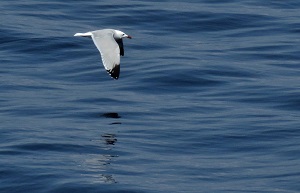 From
our accommodation in
the Straits (good birding
nearby), we will visit
several nature reserves
where migrant raptors
are often abundant at
this time of the year.
The Straits concentrates
most of the western
European
migrants, giving us
a
great chance to study
active migration of
a
wide variety of species.
Gannets will be easy
to see, but several
species
of shearwaters are also
likely, including Balearic
Shearwater. Along the
scenic coastline, we
will encounter concentrations
of gulls, including
the
rare and lovely Slender-billed
and Audouin’s
Gulls,
terns, and waders;
it’s
a perfect combination
of scenery and birding,
where we’ll
also have a chance
of finding a rarity
or unexpected bird.
Overnight in Zahara
de los Atunes.
From
our accommodation in
the Straits (good birding
nearby), we will visit
several nature reserves
where migrant raptors
are often abundant at
this time of the year.
The Straits concentrates
most of the western
European
migrants, giving us
a
great chance to study
active migration of
a
wide variety of species.
Gannets will be easy
to see, but several
species
of shearwaters are also
likely, including Balearic
Shearwater. Along the
scenic coastline, we
will encounter concentrations
of gulls, including
the
rare and lovely Slender-billed
and Audouin’s
Gulls,
terns, and waders;
it’s
a perfect combination
of scenery and birding,
where we’ll
also have a chance
of finding a rarity
or unexpected bird.
Overnight in Zahara
de los Atunes.
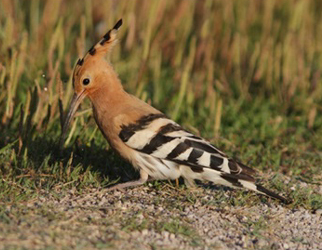
DAY
3 – Travel
to Serena Steppes
Today
we head toward the
steppes
of the Serenda area.
During
our journey, we will
visit marshlands where
birds such as Flamingos,
Spoonbills, European,
and perhaps Crested
Coots (rare), reside,
and migrant shorebirds
such as Ruff, Wood
Sandpiper, Common Sandpiper,
Little Ringed Plover,
and Black-tailed Godwit,
visit. After lunch
we can see birds such
as Thekla's and Crested
Larks, Crested Tit,
the Iberian race of
Long-tail Tit, Iberian
Green Woodpecker, Short-toed
Treecreeper, Iberian
Grey Shrike, and the
lovely Sardinian and
Dartford Warblers,
Corn Bunting, Woodchat
Shrike, Black-Shouldered
Kite, Black Stork,
Rock Sparrow, and,
with
luck, Great and Little
Bustards, and possibly
Hoopoe.
Overnight in
la Serena.
DAY
4 - Birding in La Serena
/ Zujar River
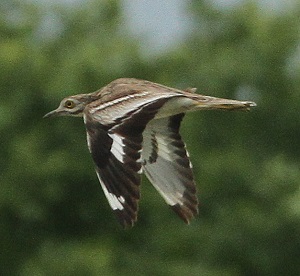 The
combination of mountains
and steppes in this
area
allows for great bird
diversity and many
interesting
species can be found
here. Egyptian Vulture,
Bonelli's Eagle, Eurasian
Eagle Owl, Red-legged
Partridge, and Black
Wheatear all occur
in
the area. The dry
steppes
are home to the impressive
Great and Little Bustards,
lovely
Black-bellied and
Pin-tailed
Sandgrouse, and secretive
Stone Curlew,
as well
as the striking Montagu's
Harrier. We also have
a good chance of finding
Spanish Sparrow in
this
region.
The
combination of mountains
and steppes in this
area
allows for great bird
diversity and many
interesting
species can be found
here. Egyptian Vulture,
Bonelli's Eagle, Eurasian
Eagle Owl, Red-legged
Partridge, and Black
Wheatear all occur
in
the area. The dry
steppes
are home to the impressive
Great and Little Bustards,
lovely
Black-bellied and
Pin-tailed
Sandgrouse, and secretive
Stone Curlew,
as well
as the striking Montagu's
Harrier. We also have
a good chance of finding
Spanish Sparrow in
this
region.
In
the afternoon, we will
go birding along the
Zujar River to look
for Eurasian Eagle
Owl,
European Bee-eater,
Golden Oriole, Grey
Wagtail,
Red-rumped Swallow,
Bonelli's Warbler and
Great Reed Warbler.
Red Avadavat and Common
Waxbills are also sometimes
found
in the area, along
with
any of the migrating
shorebirds.
DAY
5 – Trujillo
/
Belén
/
Embalse
de
Sierra
Brava
/
Monfragüe
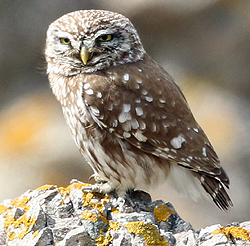 Today,
our
journey
leads
us
towards
Monfragüe,
with
stops
in
Alcollarín
and
Sierra
Brava
Reservoirs
and
also
at
majestic
Trujillo
Castle.
The
quaint
town
of
Trujillo
is
known
for
its
nesting
White
Storks,
Lesser
Kestrels
and
Pallid
Swifts,
all
of
which
breed
on
the
buildings
of
the
old
town.
The
plains
we
cross
hold
Great
and
Little
Bustard,
Short-toed
Eagle,
Montagu's
Harrier,
Little Owl,
Great
Spotted
Cuckoo
and
Woodchat
Shrike.
There’s
always
something
interesting
to
find
here.
Today,
our
journey
leads
us
towards
Monfragüe,
with
stops
in
Alcollarín
and
Sierra
Brava
Reservoirs
and
also
at
majestic
Trujillo
Castle.
The
quaint
town
of
Trujillo
is
known
for
its
nesting
White
Storks,
Lesser
Kestrels
and
Pallid
Swifts,
all
of
which
breed
on
the
buildings
of
the
old
town.
The
plains
we
cross
hold
Great
and
Little
Bustard,
Short-toed
Eagle,
Montagu's
Harrier,
Little Owl,
Great
Spotted
Cuckoo
and
Woodchat
Shrike.
There’s
always
something
interesting
to
find
here.
DAY
6 -
Monfragüe
National Park
Today,
we follow
a birding
route inside
Monfragüe
National
Park,
part
of
which
runs
along
the
Tajo
River,
where
we
can
expect
excellent
views
of
the
many
raptor
species
found
in
the
area.
Griffon
Vulture,
the
enormous
Eurasian
Black
Vulture,
Spanish
Imperial
Eagle,
Golden
Eagle,
Bonelli's
Eagle,
and
Red
Kite
and
Black
Kite
can
all
be
found
here.
Black
Redstart,
Blue
Rock
Thrush,
Thekla's
Lark,
Rock
Bunting,
Spectacled,
Orphean,
Sardinian,
Dartford,
and
Subalpine
Warblers,
Iberian
(Azure-winged)
Magpie
are
all
likely
to
be
found
locally,
as
well.
We
also
have
good
chances
of
seeing
Eagle
Owl
and
Black
Stork,
which
nest
along
the
river.
In
the
forested
area
around
the
hotel,
we
will
look
for
Rock
Sparrow,
Long-tailed
Tit,
Nuthatch
and
Short-toed
Treecreeper.
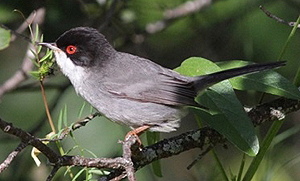
DAY
7 -
Monfragüe
to Belchite
Today,
we’ll
transfer from
Monfragüe
to Belchite,
with some
brief birding
and comfort
stops to
break the
journey. Black-shouldered
kite, Great
Spotted Cuckoo,
Tree Sparrow,
Bee-eaters, Montagu's
and Marsh
Harriers, and
Lesser Kestrels
are some
of the
possible goodies
to be
seen along
the way
on this
our mainly
traveling day.
Day
8 -
El Planeron
/ Belchite
The
scenic El
Planeron, an
ornithological reserve
north of
Belchite, is
home to
the highest
population density
of DuPont’s
Lark
in
Spain.
This
elusive
bird
is
one
of
Europe’s
most sought-after
species and
we will
devote an
entire morning
attempting to
get a
look at
this very
difficult prize.
Being in
the field
at sunrise
is essential
if we
are to
have an
opportunity to
see one.
After returning
to our
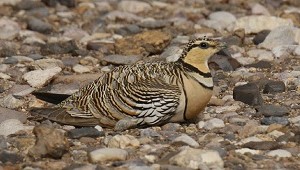 hotel for
a late
breakfast, we
will return
to the
Belchite area.
Belchite is
a nature
reserve, with
part of
its land
belonging to
SPANISH Birdlife
(SEO). It
is an
excellent place
to see
Black-bellied and
Pin-tailed
Sandgrouse,
Calandra
and
Lesser
Short-toed
Larks,
Red-legged
Partridge
and
Montagu’s
Harrier.
If
time
allows,
we
will
also
visit
the
old,
ruined
village
of
Belchite,
which
was
destroyed
during
the
Spanish
Civil
War,
or
visit
the
village
where
Goya,
the
famous
Spanish
painter,
was
born.
Black
Wheatear
is
sometimes
found
here.
hotel for
a late
breakfast, we
will return
to the
Belchite area.
Belchite is
a nature
reserve, with
part of
its land
belonging to
SPANISH Birdlife
(SEO). It
is an
excellent place
to see
Black-bellied and
Pin-tailed
Sandgrouse,
Calandra
and
Lesser
Short-toed
Larks,
Red-legged
Partridge
and
Montagu’s
Harrier.
If
time
allows,
we
will
also
visit
the
old,
ruined
village
of
Belchite,
which
was
destroyed
during
the
Spanish
Civil
War,
or
visit
the
village
where
Goya,
the
famous
Spanish
painter,
was
born.
Black
Wheatear
is
sometimes
found
here.
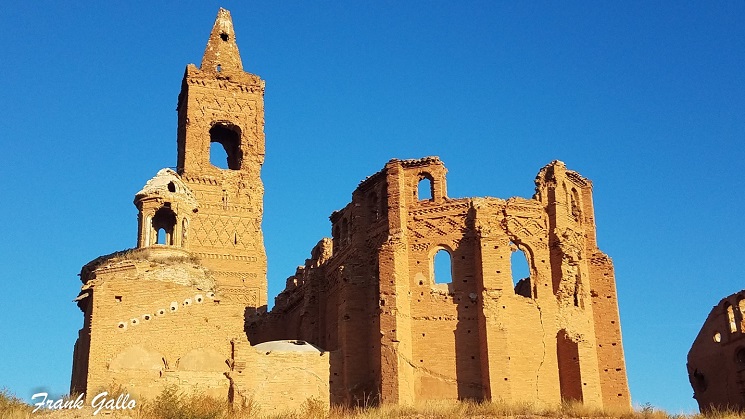
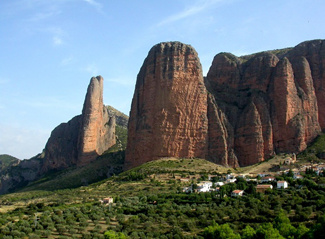 DAY
9 – Ebro
Valley to
the Pyrenees
DAY
9 – Ebro
Valley to
the Pyrenees
In
the morning
begins our
ascent into
the Pyrenees
with a
drive across
the Ebro
Valley. As
we travel
through this
arid region
we will
take time
to search
for any
birds we
may still
need. As
we approach
the foothills
of the
Pyrenees, the
habitat will
change, and
we begin
seeing Holm
Oaks and
pines covering
the hillsides.
We will
also stop
and explore
Castillo de
Loarre, a
dramatic walled
and turreted
fortress perched
on a
towering rock.
It was
built in
the 11th
century and
it is
said by
some to
be the
oldest castle
in Spain.
On route
we will
pass the
towering rock
spires known
as Mallos
de Riglos.
These rocky
spires would
not look
out of
place in
Utah and
are spectacular.
Our next
two nights
will be
in the
delightful village
of Siresa,
where we
will stay
in a
charming hotel
with a
restaurant that
has won
several regional
cooking awards.
DAYS
10 & 11 – Pyrenees
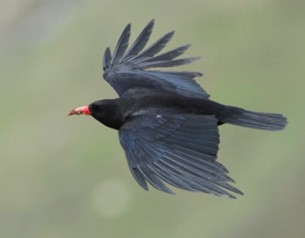 We
will have
2 full
days to
explore the
Hecho Valley
and surrounding
areas as
we look
for some
of Spain’s
most sought
after birds.
Here the
habitat consists
of deep
ravines and
gorges and
meandering valleys
covered with
pine and
beech groves.
In the
more open
areas, we
will find
cultivated fields
and beautiful
alpine meadows.
The Hecho
Valley is
one of
the most
beautiful valleys
in the
Spanish Pyrenees
and here
we will
seek the
enigmatic Wallcreeper
and the
Lammergeier—two
species highly
prized by
European birders.
Other specialties
of the
area that
we hope
to find
include Black
Woodpecker, Crested
Tit, Firecrest,
Ortolan Bunting,
Rock Bunting,
Citril Finch,
Alpine Accentor, Eurasian
Bullfinch,
Yellowhammer, Red-billed
Chough, Dipper,
Grey Wagtail
and Crag
Martin. Mammals
will also
be well-represented
here, and
we should
see Alpine
Marmot and
Chamois. During
our stay
in the
high country,
we will
be sure
to stop
at the
Monastery of
San Juan
de la
Pena, an
11th century
structure built
into a
rock face.
Legends tell
that for
four centuries
during the
Middle Ages,
the Holy
Grail was
hidden here.
The combination
of magnificent
birds and
ancient culture
will surely
make us
pine for
more time
here!
We
will have
2 full
days to
explore the
Hecho Valley
and surrounding
areas as
we look
for some
of Spain’s
most sought
after birds.
Here the
habitat consists
of deep
ravines and
gorges and
meandering valleys
covered with
pine and
beech groves.
In the
more open
areas, we
will find
cultivated fields
and beautiful
alpine meadows.
The Hecho
Valley is
one of
the most
beautiful valleys
in the
Spanish Pyrenees
and here
we will
seek the
enigmatic Wallcreeper
and the
Lammergeier—two
species highly
prized by
European birders.
Other specialties
of the
area that
we hope
to find
include Black
Woodpecker, Crested
Tit, Firecrest,
Ortolan Bunting,
Rock Bunting,
Citril Finch,
Alpine Accentor, Eurasian
Bullfinch,
Yellowhammer, Red-billed
Chough, Dipper,
Grey Wagtail
and Crag
Martin. Mammals
will also
be well-represented
here, and
we should
see Alpine
Marmot and
Chamois. During
our stay
in the
high country,
we will
be sure
to stop
at the
Monastery of
San Juan
de la
Pena, an
11th century
structure built
into a
rock face.
Legends tell
that for
four centuries
during the
Middle Ages,
the Holy
Grail was
hidden here.
The combination
of magnificent
birds and
ancient culture
will surely
make us
pine for
more time
here!
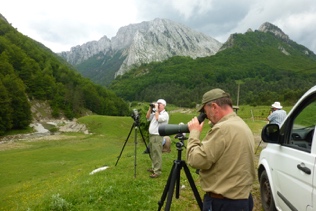
DAYS
12 – Pyrenees
to the
Ebro Delta
From
the Pyrenees
with several
stops for
birding, we
will drive
along the
Ebro River
to reach
the Ebro
Delta in
the afternoon.
DAYS
13
& 14 – Ebro
Delta
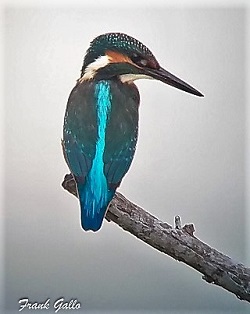 The
final leg
of our
adventure commences
with an
early morning
drive to
the southern
part of
the Ebro
Delta, one
of the
great remaining
Mediterranean wetlands
and a
site of
major ecological importance.
The
Delta is
composed primarily
of rice
paddies but,
these flooded
fields provide
excellent habitat
for an
amazing array
of migrant
and breeding
birds including
the rare
Audouin’s
Gull. We
will have
nearly two
full days
to explore
the Delta
as we
search for
exciting species
like Little
Bittern, the beautiful
Kingfisher, Water
Rail, Gray
Heron, Purple
Heron, Little
Ringed Plover,
Great Crested
Grebe, Greater
Flamingo,
Collared
Pratincole, Pied
Avocet, Black-winged
Stilt, Slender-billed
Gull, Great
Reed Warbler,
Common, and
Spotted Redshank,
Eurasian Curlew,
and Zitting
Cisticola. Since
our visit
will coincide
with the
passage of
many migrant
shorebirds and
land birds,
the possibilities
will be
many and
exciting. To
cap the
experience, we
will stay
at a
very comfortable
inn with
excellent birding
on the
grounds and
a superb
restaurant. Nights
in Deltebre.
The
final leg
of our
adventure commences
with an
early morning
drive to
the southern
part of
the Ebro
Delta, one
of the
great remaining
Mediterranean wetlands
and a
site of
major ecological importance.
The
Delta is
composed primarily
of rice
paddies but,
these flooded
fields provide
excellent habitat
for an
amazing array
of migrant
and breeding
birds including
the rare
Audouin’s
Gull. We
will have
nearly two
full days
to explore
the Delta
as we
search for
exciting species
like Little
Bittern, the beautiful
Kingfisher, Water
Rail, Gray
Heron, Purple
Heron, Little
Ringed Plover,
Great Crested
Grebe, Greater
Flamingo,
Collared
Pratincole, Pied
Avocet, Black-winged
Stilt, Slender-billed
Gull, Great
Reed Warbler,
Common, and
Spotted Redshank,
Eurasian Curlew,
and Zitting
Cisticola. Since
our visit
will coincide
with the
passage of
many migrant
shorebirds and
land birds,
the possibilities
will be
many and
exciting. To
cap the
experience, we
will stay
at a
very comfortable
inn with
excellent birding
on the
grounds and
a superb
restaurant. Nights
in Deltebre.
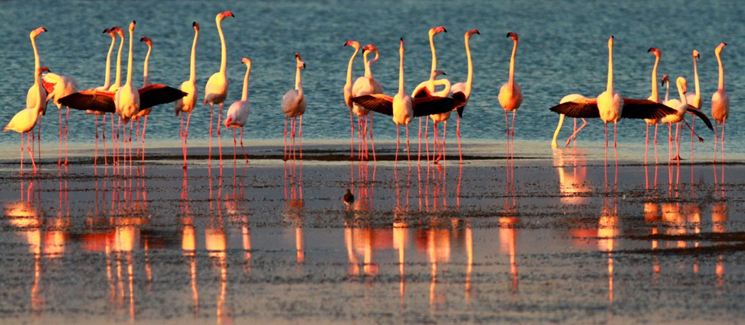
DAY
15 -
Travel to
Barcelona for
flights out (Airport
code:
BCN).
We
plan to arrive at BCN
by noon so flights out should be no earlier than 3 PM. End
of Tour.
Sunrise
Birding Leader: Frank
Gallo
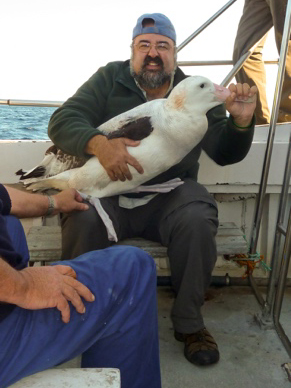 Frank is a leading expert on where to find birds in Connecticut. Through his birding tours, lectures, and classes he has inspired countless birders to discover and appreciate the region’s rich bird life. Before joining the Sunrise Birding team, Frank worked for the Connecticut Audubon Society for twelve years, as the Senior Naturalist and Director of the Connecticut Audubon Society Coastal Center at Milford Point. Previously, he served at the New Canaan Nature Center as Director of Public Programs and Director of Eco-Travel and Field Studies, and before that with the New Haven Parks Department. Currently, he is a member of the Connecticut Avian Rare Records Committee, is federally licensed as a master bird bander, and is a past president of the New Haven Bird Club.
Frank is a leading expert on where to find birds in Connecticut. Through his birding tours, lectures, and classes he has inspired countless birders to discover and appreciate the region’s rich bird life. Before joining the Sunrise Birding team, Frank worked for the Connecticut Audubon Society for twelve years, as the Senior Naturalist and Director of the Connecticut Audubon Society Coastal Center at Milford Point. Previously, he served at the New Canaan Nature Center as Director of Public Programs and Director of Eco-Travel and Field Studies, and before that with the New Haven Parks Department. Currently, he is a member of the Connecticut Avian Rare Records Committee, is federally licensed as a master bird bander, and is a past president of the New Haven Bird Club.
A superb birder, Frank has led birding expeditions throughout North America and abroad, including New Zealand, South Africa, Peru, Venezuela, Costa Rica, Trinidad and Tobago, Guatemala, Mexico, and Spain. For many years, he was bird team leader for the Forman School Rain Forest Project, guiding high school students from Litchfield for bird research projects in Costa Rica. Frank is the author of two highly successful children's nature books, Bird Calls and Night Sounds, has recently completed work on his bird finding guide, Birding in Connecticut, published in May 2018. He is also a published freelance photographer and lecturer. He holds a bachelor's degree in biology with a specialization in ornithology from Southern Connecticut State University, and in 2003 he received the Connecticut Outdoor Environmental Education Association's award as Environmental Educator of the Year.
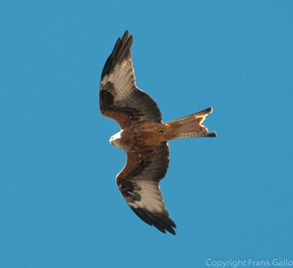 GRAND
SPAIN GRAND
SPAINAugust 31 - September 14, 2023 Registration Form> TOUR PRICE: US$ 4975.00 person/double occupancy from Seville, Spain based on minimum of 9 persons. Note: this tour begins in Seville (Airport code: SVQ) and ends in Barcelona, Spain (Airport code: BCN). Price based on current exchange rates when the tour was posted and subject to change (**see note below). Single
supplement: US$ $765.00 based
on availability. Maximum
Group Size: 12
with 2 leaders. Not included: International flight to Seville and departing flight from Barcelona, Spain, insurance, passport fees, departure tax, insurance, fees for governmental restrictions, drinks (except those mentioned), laundry, tips, and items of a personal nature. Please do not book your flights until we tell you that the tour is confirmed. Also, any and all costs arising from pandemic or Covid-19 related issues are not included in the tour cost and are the sole responsibility of the traveler. These include, among others, the costs of Covid treatment, hospitalization, medical fees, transport, meals and accommodation in case of illness or quarantine, and the costs of any Covid tests needed before, during and after the tour. Tour Code: This is a standard birding tour with regular birding walks. We usually break the day into 2 parts with a pre-breakfast excursion, followed by a full day out with picnic or tavern lunch. The weather can be unsettled at this time of year, expect everything from bright and sunny weather to some cooler weather with the chance of an odd shower so prepare for all eventualities. **Please note: The tour price is based on a minimum of 9 passengers. If there are less than 9, a small group supplement may be charged. Also, Tour prices are based on quoted costs from ground operators (in Euros), estimated fuel costs, and the rate of exchange at the time of itinerary publication. The erratic nature to global financial markets makes it difficult to predict changes in costs and foreign currency exchange rates over the long term. Since tours are priced well in advance of the actual operation of the tour, tour costs, fuel costs and exchange rates can change, sometimes drastically. Depending on the extent of such changes, it may be necessary to implement a surcharge on this tour. If a surcharge is necessary, every effort will be made to minimize the amount.
Final
payment is due
April 30, 2024.
Check or bank
transfer
are preferred
but
credit card payments
are possible
(surcharges
of up to 5% are
added depending
on amount to
cover
credit card company
fees). Please
inquire. Cancellations
and Refunds:
TRIP INSURANCE:
PLEASE NOTE:
Questions?
Contact Gina
Nichol at gina@sunrisebirding.com |